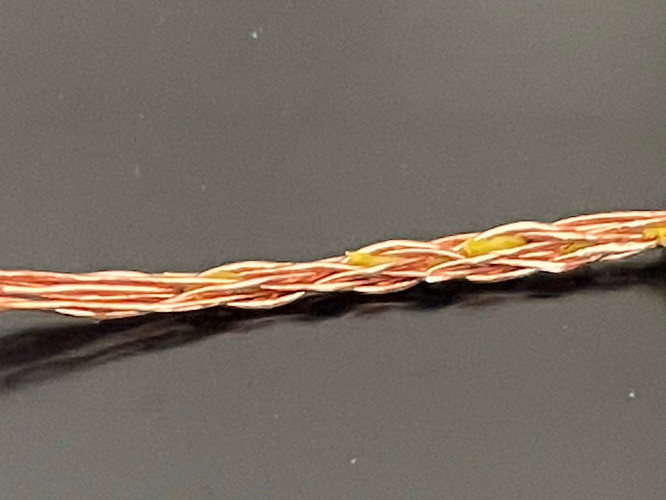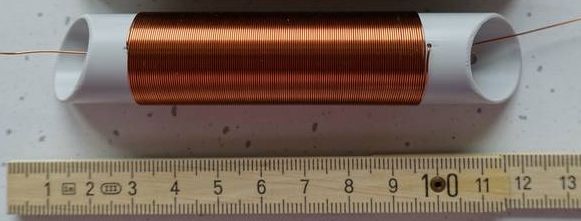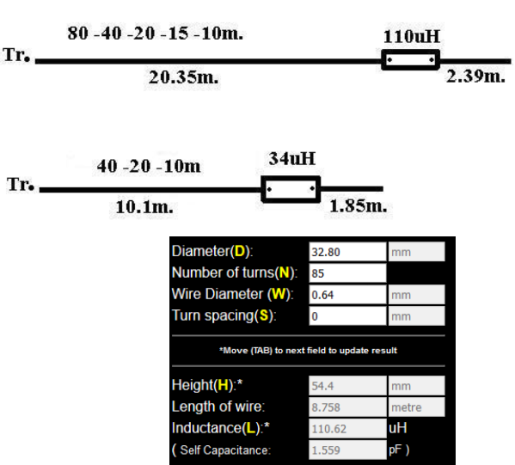From 4NEC of an inverted V, 80m,20m bands,
Efficiency % and Radiation efficiency%
1.0mm Cu 80m = 95% , 66%
0.5 Cu 80m= 90% ;20m = 93%, 71%
0.2 Cu 80m = 75% , 56% ; 20m=85%, 64%
0.2 Stainless Steel, 10%, 8%
(6x0.25 ~=0.5mm round, ~1mm if flat)
While slightly counter intuitive, loss is directly proportional to length, but skin effect is sqrt of freq. So higher freq makes dipole more efficient.
As long as you have plain copper or silver plated copper, any practical thickness of wire is OK.
If you have tinned copper, galv, or stainless then it shouldn’t be very thin.
It’s even more wrong as the wire is Litz wire and not single strand.
It is not Litz, It looks perhaps to be flat stranded, like a ribbon form wound on the core. (which would be better loss than a circular bundle. Area~=7D for hex bundle vs ~13D for flat bundle)
What is important about Litz (braided, insulated) wire is that whereas a bundle of enough strands in a normal twisted wire would have an inner bundle that is always inside,
in true (braided) Litz, all the strands get to spend some time on the outside.
A bundle of twisted (unbraided) insulated strands is not Litz, and has excess loss as the magnetic fields affect current in the inner strands relative to the outer strands.
If you do that, then when a strand breaks, it is totally lost to the whole antenna. (but perhaps still contributes some eddy current losses). In a conductive bundle a break is only a tiny increase in R, as it is soon reconnected back to the other strands. [debate topic: does capacitance reconnect it?]
The lovely antenna wire below (stripped) is braided, but I think the reason is to keep it more flexible, as it is made from hard drawn copper.



